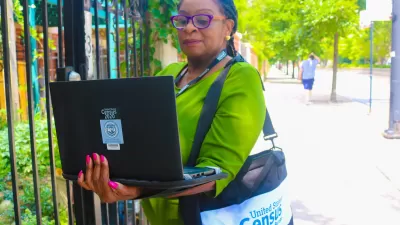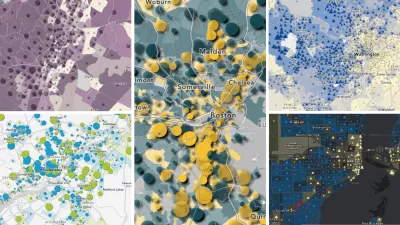The Architecture of Segregation: The slums are racially concentrated, on the rise, and spreading to the suburbs.

Concentrated poverty is defined by the U.S. Census as areas where 40 percent of the tract population lives below the federal poverty threshold, which is currently about $24,000 for a family of four. In a 2011 American Survey Brief, the Census Bureau explains why concentrated poverty matters: "Measuring this concentration of poverty is important because researchers have found that living in areas with many other poor people places burdens on low-income families beyond what the families’ own individual circumstances would dictate." Richard Florida adds that "concentrated neighborhood poverty shapes everything from higher crime rates to limited social mobility for the people—and especially the children—who live in these neighborhoods."
In a recently published paper entitled Architecture of Segregation: Civil Unrest, the Concentration of Poverty, and Public Policy, Paul Jargowsky presents a startling statistical view of rising racial and economic segregation, particularly in mid-size metropolitan areas. Here are some key findings.
Concentrated poverty has nearly doubled since the year 2000. Florida finds this "a troubling reversal of previous trends, particularly of the previous decade of 1990 to 2000, where Jargowsky’s own research found that concentrated poverty declined."
Concentrated poverty disproportionately affects minorities: "More than one in four of the black poor and nearly one in six of the Hispanic poor lives in a neighborhood of extreme poverty, compared to one in thirteen of the white poor," Jargowsky reports.
Ninety percent of concentrated poverty is in the nation’s metropolitan areas. "While there is clearly poverty in small towns and rural areas, it is uncommon to find neighborhoods (census tracts) in those places that match the high-level of poverty found in metropolitan ghettos and barrios," Jargowsky reports.
The increase in concentrated poverty is not occurring in the nation’s largest cities, but rather in small and mid-sized metropolitan areas of 500,000 to one million residents. Concentrated black poverty actually declined in the urban centers of New York, Los Angeles, and Washington, D.C.
With its removal to the suburbs, Jargowsky believes the crisis of concentrated poverty has been removed from the spotlight. "Given the contrary trend in these 'nerve center' metropolitan areas, it is perhaps not surprising the historic re-concentration of poverty since 2000 has largely escaped public attention—at least until the recent racial conflicts and civil unrest resurfaced urban poverty as a major policy concern." Indeed, as he points out, places like Ferguson are a "prime example" of the rise of concentrated black poverty in the inner-ring suburbs of mid-size metropolitan areas. "They are seeing places like Ferguson up close, but they are not seeing the larger set of forces that created Ferguson."
Florida agrees with Jargowsky that a failure to change policy will have long-term consequences. "The incomes and lives of generation after generation are being locked into terrifyingly divergent trajectories." While Jargowsky wants to see a counter-intervention in the housing market to correct for the consequences of exclusionary zoning, Florida adds three additional prescriptions: build affordable housing in urban centers; raise local minimum wages to reflect local prices; and invest in regional public transit systems.
FULL STORY: America's Biggest Problem Is Concentrated Poverty, Not Inequality

Planetizen Federal Action Tracker
A weekly monitor of how Trump’s orders and actions are impacting planners and planning in America.

San Francisco's School District Spent $105M To Build Affordable Housing for Teachers — And That's Just the Beginning
SFUSD joins a growing list of school districts using their land holdings to address housing affordability challenges faced by their own employees.

The Tiny, Adorable $7,000 Car Turning Japan Onto EVs
The single seat Mibot charges from a regular plug as quickly as an iPad, and is about half the price of an average EV.

As Trump Phases Out FEMA, Is It Time to Flee the Floodplains?
With less federal funding available for disaster relief efforts, the need to relocate at-risk communities is more urgent than ever.

With Protected Lanes, 460% More People Commute by Bike
For those needing more ammo, more data proving what we already knew is here.

In More Metros Than You’d Think, Suburbs are Now More Expensive Than the City
If you're moving to the burbs to save on square footage, data shows you should think again.
Urban Design for Planners 1: Software Tools
This six-course series explores essential urban design concepts using open source software and equips planners with the tools they need to participate fully in the urban design process.
Planning for Universal Design
Learn the tools for implementing Universal Design in planning regulations.
Smith Gee Studio
City of Charlotte
City of Camden Redevelopment Agency
City of Astoria
Transportation Research & Education Center (TREC) at Portland State University
US High Speed Rail Association
City of Camden Redevelopment Agency
Municipality of Princeton (NJ)




























